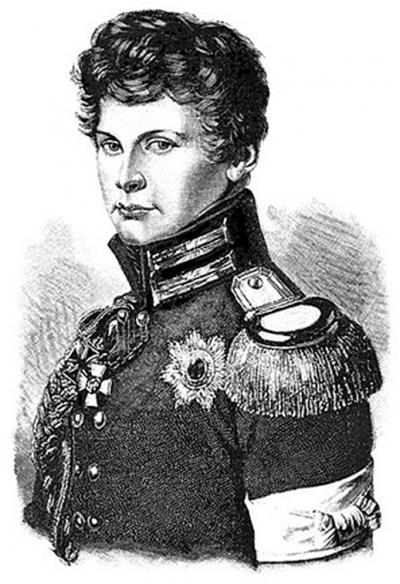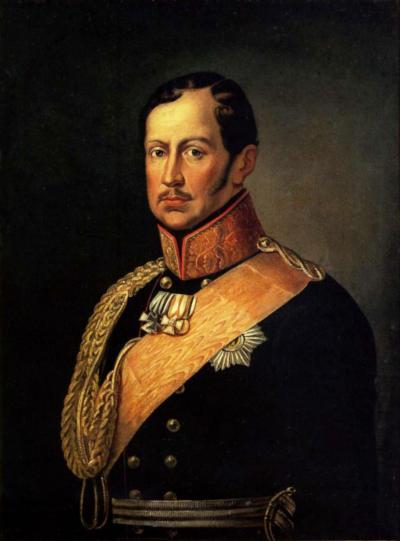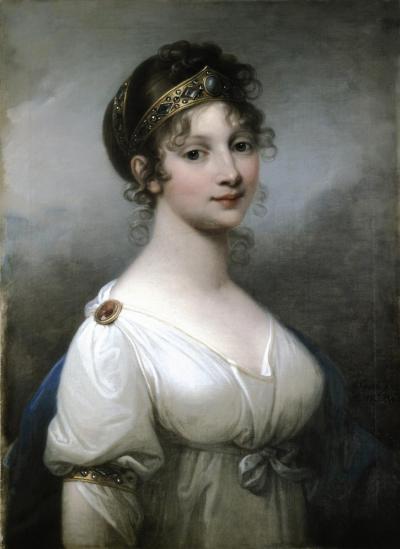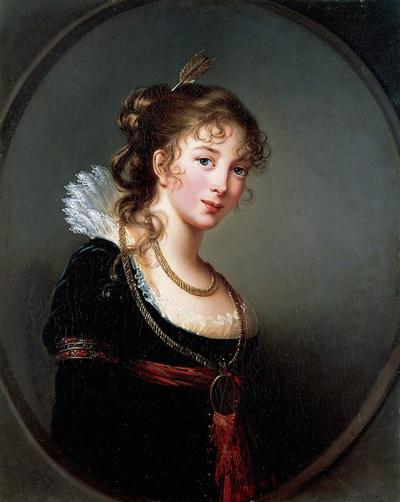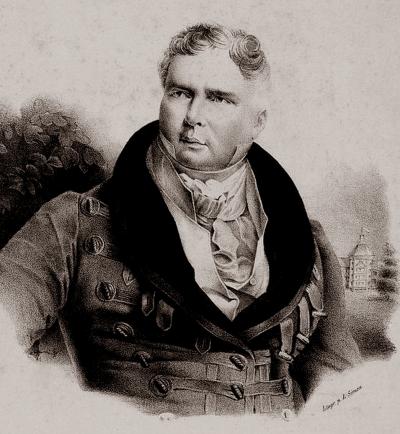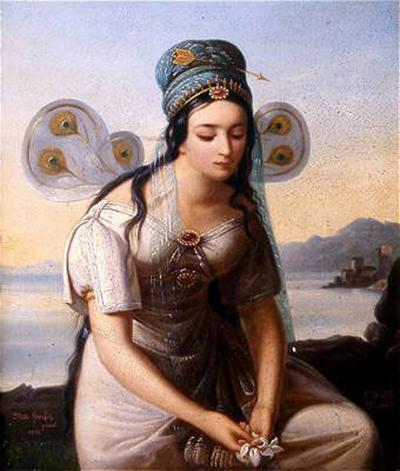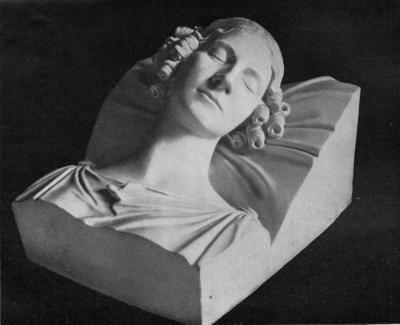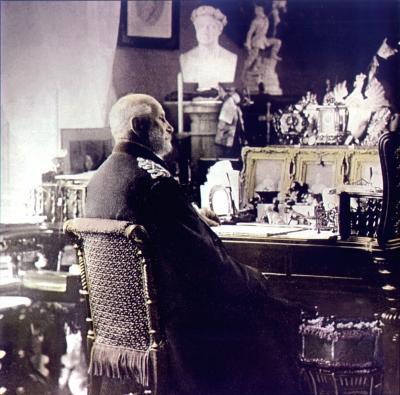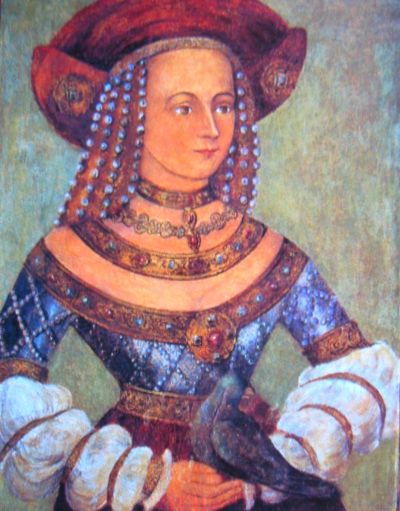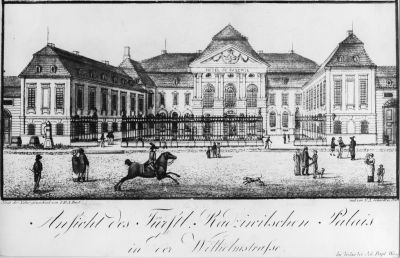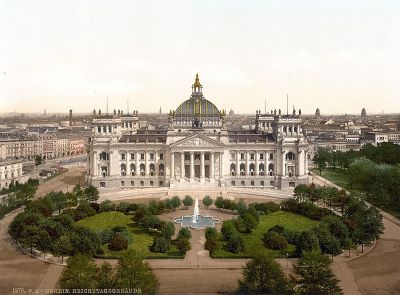A forbidden love – Princess Elisa Radziwiłł and Wilhelm of Prussia

Without more ado Wilhelm set off for the Rhineland and the Netherlands in order to flee from his problems. By this time the whole of Berlin had learnt of the Prince’s departure in the newspapers and was following the course of the drama. Meanwhile Prince Oskar of Sweden, who saw no problem in the difference in social status, presented himself as a candidate for Elisa’s hand. Wilhelm spent his 25th birthday, the day on which he had wanted to marry Elisa, in Holland. Elisa was only permitted to write a few harmless words to him, and when Wilhelm wanted to send her a message he wrote it to her mother. His sister Charlotte sent him a small portrait of Elisa as a present from Russia, which he was supposed to have kept on his desk until his death in 1888.
Back in Berlin, following a cool and impersonal meeting with the King, Wilhelm’s resistance flared up once more and he commissioned a counter-study from two legal experts. This was followed by meetings between Elisa and Wilhelm in the theatre, receptions at the Radziwiłł’s house and long conversations in the palace garden on Wilhelmstraße, the content of which the Prince wrote down in the form of a dialogue. “No one else in the world but her!”, he declared. She was the “joy” of his life. Needless to say, the study he had commissioned came out in favour of him and was promptly rejected by the ministers and the Director of Police, Kamptz. On 28th July 1822 the whole Radziwiłł family set off for Silesia and Ruhberg Castle near Schmiedeberg in the Hirschberg valley. Prussian aristocrats, many of whom were friends of the Radziwiłłs, were well-known for their love of this part of the countryside surrounded by hills at the foot of the Sudeten mountains. They had thus erected more than thirty castles, mansions and parks in the Hirschberg valley during the 19th century. Ruhberg castle, which was surrounded by an extensive landscaped park, had been partly designed by the architect Carl Gotthard Langhans, the man responsible for the Brandenburg Gate. Prince Radziwiłł initially rented the summer residence for five months, but in the end the family did not return to Berlin for the next eight years.
Meanwhile Privy Councillor Raumer had presented three further dossiers which described a bond between the two lovers as a “mismarriage” that would undermine the hierarchical structure of the house of Hohenzollern. The Prussian Foreign Minister, Christian Günther Graf von Bernstorff, who was asked to make a judgement on the case, did not feel in a position to assess the equality of birth since the Radziwiłłs were a part of the Polish and not the German aristocracy. As a result he suggested that the King make such a pronouncement. Crown Prince Friedrich Wilhelm, who dearly wanted his brother to lead a happy life, vehemently condemned both the dossier and the intrigues plotted by the “court toadies”. Indeed he had a violent argument with his uncle, Grand Duke Georg, who had also commissioned other dossiers with almost identical results. Whilst Wilhelm was with his father and brothers at a congress of monarchs in Verona, Elisa celebrated her 19th birthday. Wilhelm wrote to her parents: “Elisa is indispensable for the happiness in my life”.
The Radziwiłł family decided not to return to Berlin in order to spare Elisa from any further discussions. By now they interpreted the King’s refusal to agree to the marriage as a monstrous insult, particularly because Princess Luise was related to the King. It was not only the family, but also Wilhelm, who suspected that the decision had been made for political reasons. For Prince Radziwiłł had pleaded for the restoration of the Polish nation, possibly under the leadership of Prussia, not only at the Congress of Vienna but also to the King in person. His opinion was shared by the Reich Freiherr Heinrich vom und zum Stein, a friend of the Prince, and also by Elisa’s best friend Luise von Kleist, whose fiancé was one of the most rebellious of the Polish students. In May 1823 the family moved into the vice-regent’s palace in Poznan, where Elisa began to create a circle of Polish friends and turned her interests towards the culture and history of Poland.
Whilst Wilhelm and Elisa exchanged brief jottings between Berlin and Poznan, alongside pressed flowers and leaves, and pieces of jewellery and locks of hair, the Crown Prince who was furious with Raumer for his arrogance, presented his own research into the history of the Hohenzollerns, and wrote a written statement in which he mocked the dossier drawn up by Prince Wittgenstein, and told the King to make up his mind once and for all. The King had already relented on two occasions. First he had allowed the Crown Prince to marry the Catholic Princess Elisabeth of Bavaria, and then he had allowed Wilhelm to visit his sister in St Petersburg – and travel via Poznan! Wilhelm took his revenge with an affront to the King. He had discovered that the King’s new daughter-in-law, Elizabeth, was directly descended from Prince Boguslaw Radziwiłł via the Elector Karl Philipp of the Palatinate. Thereupon Wittgenstein presented his twenty second dossier on a future “mismarriage” with a Princess Radziwiłł, on the grounds that she did not come from a royal dynasty.
Pressure on the King grew. The Crown Prince complained to his uncle Georg about the coldness and heartlessness of the monarch. Then Wilhelm wrote a letter in which he asked the King for a decision and pleaded with him not to set up a commission whose report would put the Radziwiłł family in an extremely awkward position. However he did say that he would agree to any decision made by the King. Princess Radziwiłł also wrote a letter in which she complained of the public humiliation the family had been forced to suffer, and begged to be spared any further surely mortifying recommendations made by a commission. Nonetheless the King appointed a commission, consisting of Wittgenstein, General Duke Gneisenau and several ministers, whose report in June 1824, was condemned by Wilhelm as spineless. The King had called a family meeting in the Hirschberg valley, whereupon the Radziwiłł family at Ruhberg Castle awaited the whole royal family including Charlotte from St. Petersburg and the new Crown Princess Elisabeth. It is possible that the King wanted to (in the words of Dagmar von Gersdorff), “take a personal look at” his son’s “constant love”. The meeting was friendly and warm-hearted. Elisa’s beauty and grace made a lasting impression on King Friedrich Wilhelm III, so that on his return to Berlin he did everything in his power to enable her to marry Wilhelm despite all the opposition.
